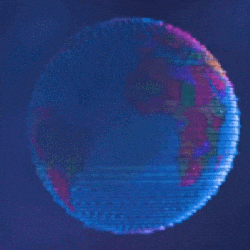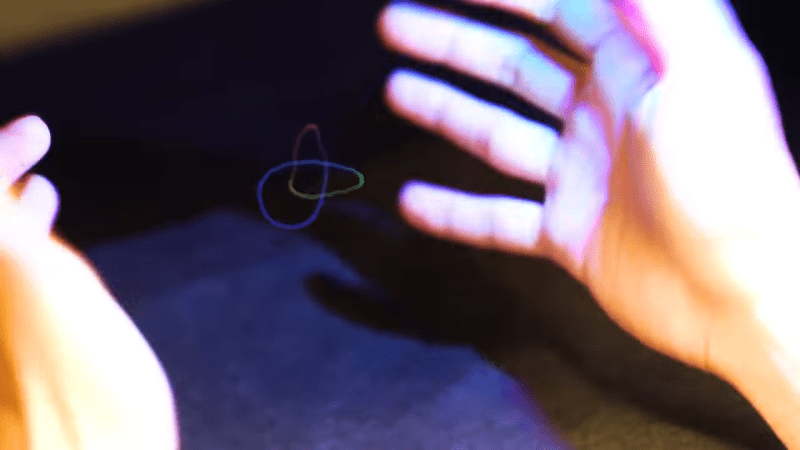 We’ve seen 3D image projection tried in a variety of different ways, but this is a new one to us. This volumetric display by Interact Lab of the University of Sussex creates a 3D image by projecting light onto a tiny foam ball, which zips around in the air fast enough to create a persistence of vision effect. (Video, embedded below.) How is this achieved? With a large array of ultrasonic transducers, performing what researchers call ‘acoustic trapping’.
We’ve seen 3D image projection tried in a variety of different ways, but this is a new one to us. This volumetric display by Interact Lab of the University of Sussex creates a 3D image by projecting light onto a tiny foam ball, which zips around in the air fast enough to create a persistence of vision effect. (Video, embedded below.) How is this achieved? With a large array of ultrasonic transducers, performing what researchers call ‘acoustic trapping’.
This is the same principle behind acoustic levitation devices which demonstrate how lightweight objects (like tiny polystyrene foam balls) can be made to defy gravity. But this 3D display is capable of not only moving the object in 3D space, but doing so at a high enough speed and with enough control to produce a persistence of vision effect. The abstract for their (as yet unreleased) paper claims the trapped ball can be moved at speeds of up to several meters per second.
It has a few other tricks up its sleeve, too. The array is capable of simultaneously creating sounds as well as providing a limited form of tactile feedback by letting a user touch areas of high and low air pressure created by the transducers. These areas can’t be the same ones being occupied by the speeding ball, of course, but it’s a neat trick. Check out the video below for a demonstration.
Acoustic levitation has applications far beyond just levitating some lightweight objects. Check out this talk from [Asier Marzo]; you might be surprised at the number of fields with clever applications for acoustic levitation.
[via The Guardian]
















It’s a trap!
And ballsy!
My my, such levity!
🤣🤣🤣
Ummm
That IS cool but shutter speed 20 seconds???
I am thinking that in order to achieve that persistence of vision effect one must take a long exposure with a camera. This isn’t something you are going to see with your naked eye.
Again, still cool but probably worth mentioning.
They did a long exposure for that shot but the other displayed stuff is a normal PoV effect visible to the naked eye. The ball can move several meters per second, according to the paper’s abstract.
Why isnt it worth mentioning? If things were not mentioned because they were an emerging technology with no current practical use in its current state of development, almost nothing would be on this site.
The full globe is a 20 second exposure, but they demonstrate the real-time display (two loops) later on in the video when they’re demonstrating using the ultrasonic transducers as a speaker.
Cats the world over are going to love this.
Sure not. It’s a screaming nightmare for any cat’s ears.
No Princess Leia? No, “help me Obi-Wan Kenobi”? I can’t be the only one disappointed.
Time for someone to build large scale with a ping pong ball!
Looking forward to this paper coming out so we can get started on building one :)
Its already out actually http://www.nature.com/articles/s41586-019-1739-5.pdf The transducers are quite pricey though
Meh, this is a cute arrangement of multiple existing ideas, but going forward how is it not a dead end?
45/5000
this has already been done with optical traps… https://www.nature.com/articles/nature25176/